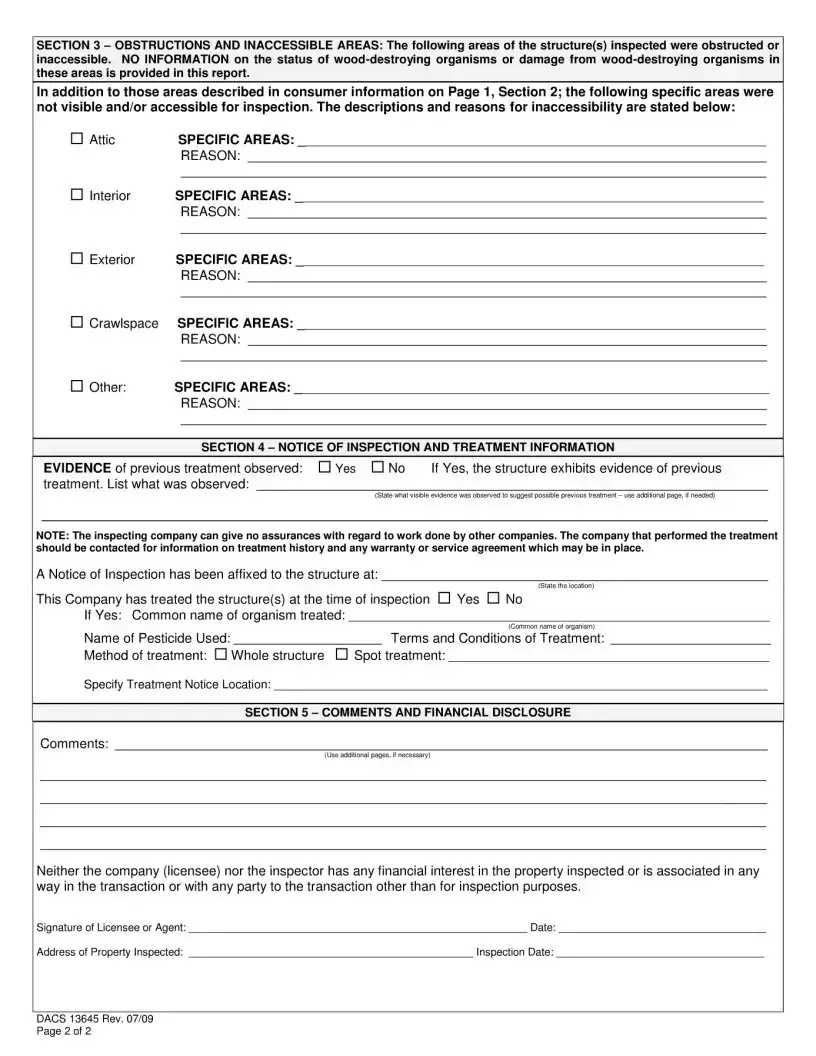What is a Wood Destroying Report (WDR)?
A Wood Destroying Report is a document that outlines the findings of an inspection performed by a licensed pest control company. It details the presence or absence of wood-destroying organisms (WDOs) such as termites, powder post beetles, old house borers, and wood-decaying fungi in a property. The report is based on a visual inspection of accessible areas and aims to inform stakeholders about potential damage or infestation risks.
Why is it important to have a Wood Destroying Report?
Obtaining a Wood Destroying Report is crucial for understanding the integrity of a property's wood structures. It identifies existing or potential problems that could lead to significant structural damage and financial loss. For homebuyers, it is an essential part of the due diligence process, providing peace of mind or negotiating power. For sellers, it can validate the condition of their property. Moreover, it offers homeowners a way to detect infestations early, preventing expensive repairs down the line.
What does the inspection cover?
The inspection focuses on identifying visible signs of WDOs or damage caused by these organisms. Inspectors look for live WDOs, evidence of WDOs such as dead insects, frass, shelter tubes, or exit holes, and any damage related to WDO activity. However, the inspection is limited to visible and readily accessible areas. It does not include enclosed or inaccessible sections, areas concealed by wall or floor coverings, furniture, or stored items, and does not extend to fungi other than wood-decaying fungi.
Are there areas that the inspection might not cover?
Yes, the report explicitly states that certain areas if not visible or accessible at the inspection's time, will not be covered. These might include attics, crawlspaces, interiors, and exteriors where accessibility is obstructed or where inspection would require invasive measures. The report includes a section that details specific areas that were not inspected and the reasons for their inaccessibility.
What happens if evidence of WDOs is found during the inspection?
If the inspection reveals visible signs of WDOs or damage caused by such organisms, the findings will be detailed in the report, including the type of WDO, location, and a description of the evidence or damage observed. Recommendations for further investigation by qualified building experts or treatment options may also be provided to address the findings and prevent future damage.
Is a Wood Destroying Report a guarantee against future infestations?
No, the report is based solely on what was visible and accessible at the time of inspection. It does not guarantee the absence of WDOs or damage not observed during the inspection. The report advises stakeholders that further investigation by qualified experts should be pursued to understand the full extent of any potential structural issues.
What if the property has been treated for WDOs in the past?
The report includes a section to note observed evidence of previous treatments, such as boreholes or treatment stickers. While the inspecting company cannot vouch for the efficacy or scope of past treatments performed by other companies, this information can be valuable for understanding the property's history with WDOs and guiding follow-up actions.
What is the relevance of the Notice of Inspection?
A Notice of Inspection is affixed to the structure at a specified location and serves as a record that an inspection was conducted. It may also include details on any treatment administered by the inspecting company at the time of inspection, including the targeted organism, pesticide used, and treatment method. This notice helps document the property's history of WDO inspections and treatments.
How can a Wood Destroying Report affect a real estate transaction?
A Wood Destroying Report can significantly impact a real estate transaction by informing all parties of the condition of the property's wood structures. Discoveries of active infestations or damage may necessitate renegotiations on price, require the seller to perform treatments prior to sale, or even lead to the cancellation of a sale if the issues are deemed too extensive. Conversely, a clean report can expedite the transaction process, providing assurance to the buyer and lender.
Who should be contacted if the report indicates a need for further investigation or treatment?
If the report suggests further investigation or treatment is needed, it's advisable to contact qualified experts in the building and pest control trades. For structural assessments, a licensed structural engineer or contractor with experience in dealing with WDO damage should be consulted. For treatment of infestations, a reputable pest control company that specializes in treating the specific WDO identified in the report should be engaged.


